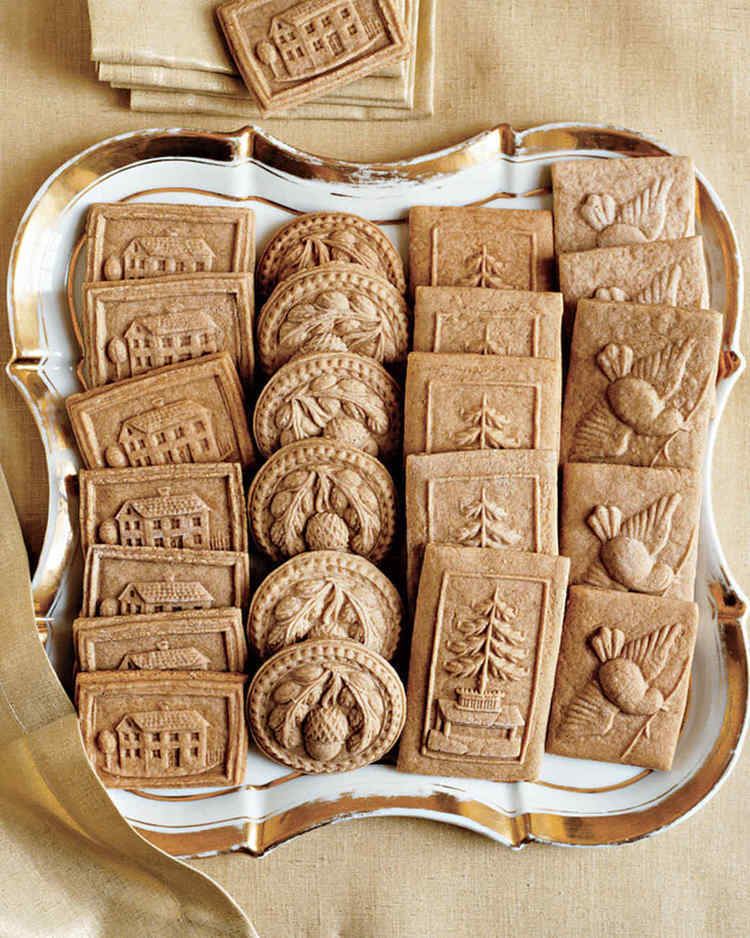 | ||
Similar Tiramisu, Mascarpone, Verrine, gingerbread, Pepernoot | ||
Speculaas or speculoos (Dutch: Speculaas [speːkyˈlaːs], Flemish: speculoos, French: spéculoos, German: Spekulatius) is a type of spiced shortcrust biscuit, traditionally baked for consumption on or just before St Nicholas' day in the Netherlands (December 5), Belgium (December 6), and around Christmas in Germany. Speculaas are thin, very crunchy, caramelized, slightly browned and, most significantly, have some image or figure (often from the traditional stories about St. Nicholas) stamped on the front side before baking; the back is flat.
Contents

Speculaas dough does not rise much. Dutch and Belgian versions are baked with light brown (sometimes beet) sugar and baking powder. German Spekulatius uses baker's ammonia as leavening agent. Indian, Indonesian, and Mediterranean spices used in speculaas are cinnamon, nutmeg, cloves, ginger, cardamom and white pepper; these were common in the 1600-1700s due to the Dutch East Indies spice trade. Family recipes may also include other small amounts of spices like anise, etc. Traditionally, speculaas were made from Frisian flour and spices. The name speculoos was coined for Belgian wheat flour cookies with hardly any spices. Today most speculaas versions are made from white (wheat) flour, brown sugar, butter and spices. Some varieties use some almond flour and have slivered almonds embedded in the bottom.
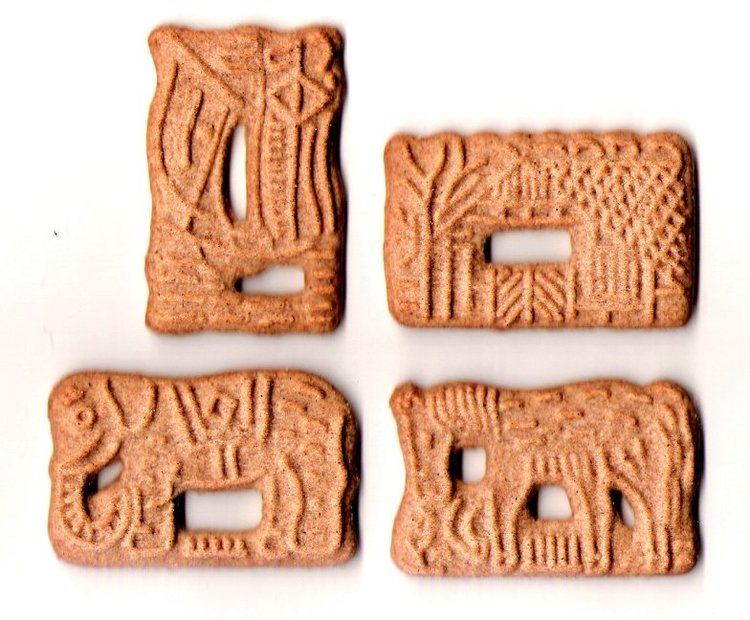
The dough is prepared by beating butter, sugar and spices and combining them. The flour and leavening agent are mixed separately and then added. Bakers are careful not to overwork the dough, so it will rise slightly. The dough is stored in a cool place overnight to give the spices time to permeate the dough and add extra flavor.
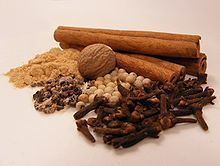
Name
There are several interpretations for the origins of the name speculaas. It may derive from Latin speculum, which means mirror and refers to the fact that the images are cut as a mirrored bas-relief into a wooden stamp, which is then used to decorate speculaas. Another, less likely, word origin refers to the Latin word speculator which, among other meanings, could refer to a bishop or St Nicholas' epithet, "he who sees everything". Still another possible source is Specerij, the Dutch word for spice.
Derivative varieties of speculaas cookies
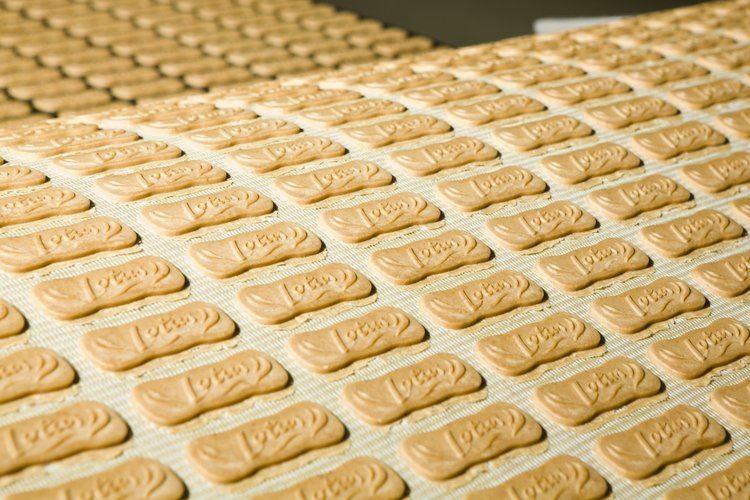
The Belgian city of Hasselt is known for a local variety of speculoos. On January 13, 1870, Antonie Deplée, a baker from Hasselt, acquired a license for Hasselt speculoos: "une espèce de pain d'amandes connu sous le nom de spéculation" ("a kind of almond 'bread' known under the name spéculation"). He sold this version locally and abroad.
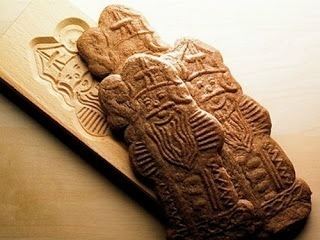
The German spekulatius, traditional in Westphalia and the Rhineland, is similar. It is popular throughout the country around Christmastime and usually not available at other times of the year.
Spread or paste variant
By 2007, several Belgian companies began marketing a paste variant of speculoos, now available worldwide under various brands and names: as Speculla, Cookie Butter, Biscoff Spread. As a form of spreadable Speculoos cookies, the flavor is caramelized and gingerbread-like with a color similar to peanut butter and a consistency ranging from creamy to granular or crunchy. The spread consists of 60% crushed speculoos cookies along with vegetable oils.
Workers in the Low Countries have traditionally made a sandwich in the morning with butter and speculaas or speculoos cookies. This would develop into a spread-like consistency by lunchtime. In 2008, two competitors entered a contest on the Belgian television show, The Inventors (de Bedenkers), with a spread made from speculoos cookies — Els Scheppers, who reached the semi-finals, and the team of chef Danny De Mayer and Dirk De Smet, who weren't selected as finalists. Spreads made from crushed Speculoos cookies would subsequently go into production by three separate companies and become popular.
